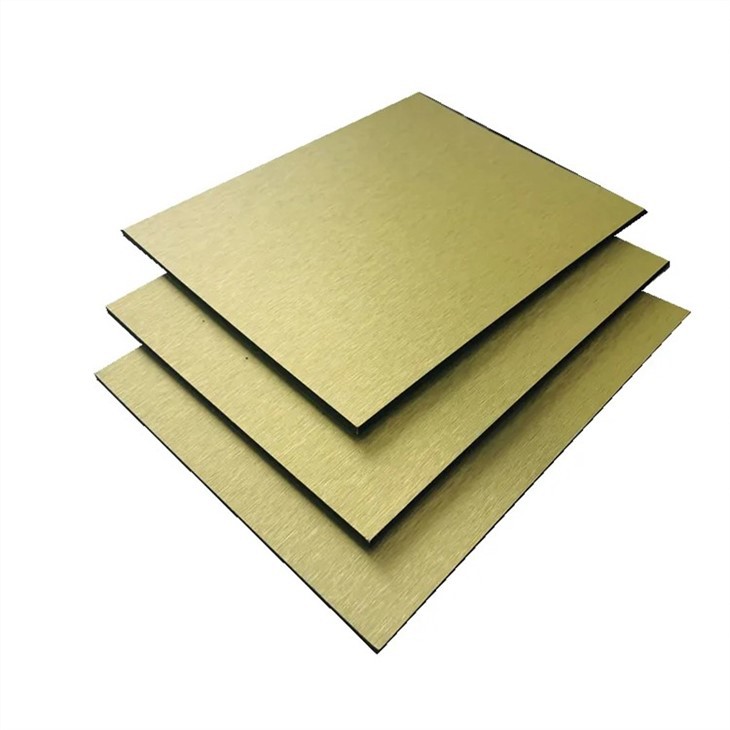Hey there! As an aluminum composite ACM supplier, I often get asked if our ACM panels can be used in seismic areas. It's a super important question, especially considering the potential risks associated with earthquakes. So, let's dive right into it and explore whether our ACM can hold up in these challenging environments.
First off, let's understand what aluminum composite ACM is. It's a material made up of two thin aluminum sheets bonded to a non - aluminum core. This combination gives it a great balance of strength, durability, and aesthetic appeal. We've got a wide range of products, like the New Design Brushed Alucobond Panel, Metal Brushed 3/4mm Aluminum Composite Panel, and Factory Brushed Surface Decorative ACP Panel, each with unique features to suit different needs.
Now, when it comes to seismic areas, the key factors we need to consider are how well the material can withstand the forces generated during an earthquake. Earthquakes bring with them a whole bunch of challenges, including ground shaking, vibrations, and potential building movement.
One of the big advantages of our ACM is its flexibility. The aluminum outer layers and the core work together to allow a certain degree of bending and movement without breaking. Unlike some rigid materials that might crack or shatter under seismic stress, our ACM can flex and adapt to the changing conditions. This is crucial because it helps prevent catastrophic failures that could endanger lives and cause significant property damage.
Another important aspect is the lightweight nature of ACM. Compared to heavier building materials, our panels put less stress on the overall structure of a building. In a seismic event, this means that the building has to deal with less inertia and is more likely to stay stable. When a building is lighter, it's also easier for it to move with the seismic waves rather than resist them, reducing the risk of collapse.
We've also conducted a lot of tests on our ACM to ensure its performance in seismic - like conditions. These tests simulate the forces and vibrations that occur during an earthquake. The results have been really promising. Our panels have shown excellent resistance to the dynamic loads and have maintained their integrity even under extreme conditions.


But it's not just about the material itself. Proper installation is also a make - or - break factor. In seismic areas, we recommend using specific installation techniques that account for the potential movement of the building. For example, using flexible mounting systems that allow the panels to move slightly without detaching from the structure. Our team of experts can provide detailed guidelines on the best installation methods to ensure the safety and stability of the ACM in seismic - prone regions.
Of course, every seismic area is different, and local building codes and regulations play a huge role. Before using our ACM in a seismic area, it's essential to check with the local authorities and make sure that our products meet all the necessary requirements. We're always happy to provide any technical documentation and support to help you through this process.
In addition to the technical aspects, our ACM also offers great aesthetic value. You can use it to create stunning facades and interior designs, adding a modern and stylish look to buildings in seismic areas. Whether you're going for a sleek, contemporary look or a more traditional design, our wide range of colors and finishes can help you achieve your vision.
Let's talk about some real - world examples. There are already many buildings in seismic areas that have successfully used our ACM. These buildings have withstood several minor and major seismic events without any significant damage to the ACM panels. This shows that our products are a reliable choice for construction projects in these high - risk regions.
However, it's important to note that no material is completely immune to the effects of an earthquake. While our ACM has many advantages, it's still part of a larger building system. Other factors like the overall design of the building, the quality of the foundation, and the presence of other structural elements also contribute to the building's seismic performance.
If you're planning a construction project in a seismic area and are considering using our ACM, I highly recommend getting in touch with us. Our team can provide you with all the information you need, including product specifications, installation guides, and case studies from similar projects. We can also work with you to customize the solution based on your specific requirements.
Whether you're an architect, a builder, or a developer, we're here to support you every step of the way. Don't hesitate to reach out and start a conversation about how our ACM can be the perfect choice for your seismic - area project. We're confident that our products will not only meet but exceed your expectations in terms of performance, aesthetics, and safety.
So, in conclusion, yes, aluminum composite ACM can definitely be used in seismic areas. With its flexibility, lightweight nature, and proven performance in tests and real - world applications, it's a reliable and attractive option for construction projects in these challenging environments. But remember, proper planning, installation, and compliance with local regulations are key to ensuring its success.
If you're interested in learning more or want to discuss a potential project, just drop us a line. We're eager to help you bring your building ideas to life in a safe and stylish way.
References
- Building Seismic Safety Council. "Seismic Design and Construction of Buildings."
- ASTM International. "Standards for Testing and Evaluation of Building Materials in Seismic Conditions."
- International Building Code (IBC). "Provisions for Seismic Design and Construction."